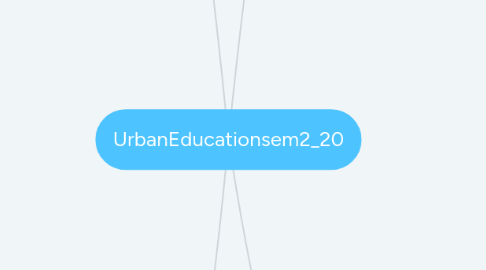
1. Synthesenota_leerplichtonderwijs
1.1. Vaststellingen
1.1.1. Verzadiging - Afstemming leerlingenaantal op schoolcapaciteit
1.1.1.1. Bevolkingsstijgging op schoolleeftijd
1.1.1.1.1. Bevolkingstoename
1.1.1.1.2. Inwijkelingen
1.1.1.2. Schoolcapaciteit
1.1.1.2.1. Ongekend of moeilijkt te tellen
1.1.2. Diversiteit
1.1.2.1. Talen
1.1.2.1.1. Welke
1.1.2.1.2. Oplossingen
1.1.2.2. Normen
1.1.2.2.1. Hoofddoek
1.1.2.2.2. Interactie Ouders
1.1.2.2.3. Islamonderwijs
1.1.2.3. Dualisering van de kwalificaties
1.1.2.3.1. socio economische achtergrond volgt univ, hogeschool, doorstroming, technisch, beroeps
1.1.3. Tekorten onderwijzend kader
1.1.3.1. grote turnover
1.2. Inleiding
1.2.1. Veel geld (7%) - Wel 2013
1.2.2. Gewesten vs Gemeenschappen
1.2.2.1. Brussels hoofdstedelijk gewest
1.2.2.2. Gemeenschap
1.2.2.2.1. Franse Gemeenschap
1.2.2.2.2. Vlaamse Gemeenschap
1.2.2.2.3. Vrije keuze voor leerlingen, mag je mixen
1.2.2.3. Andere (privé- en Europese scholen
1.2.3. onderwijsnetten
1.2.3.1. Gemeenschapsonderwijs
1.2.3.1.1. Nederlands lager 30%, Frans lager 11%
1.2.3.2. Gesubsidieerde officiële onderwijs (gemeenten en provincies)
1.2.3.2.1. Frans dominant lager, maar niet voor nederlands
1.2.3.3. Vrije gesubsidieerde onderwijs (Confessionele scholen, maar ook stichtingen :Freinet, Montessori, Steiner, ...)
1.2.3.3.1. Frans: 49% marktaandeel in middelbaar, idem nederlands 60%
1.2.4. Zuilen
1.3. Werkdomeinen en debatten
1.3.1. Grond-capaciteitsuitbreiding
1.3.1.1. Full service school - brede school
1.3.2. reguleringssystemen schoolselectie
1.3.3. Sturing op Brussels niveau
1.4. Conclusie
1.4.1. Complex speelveld van sturing
1.4.2. wereldstad
1.4.3. waterval
1.4.4. rol Brussels gewest
1.4.5. 1 task force
1.4.6. coördinatie
2. 4 Basisthema's
2.1. onderwijsorganisatie
2.2. schoolinfrastructuur
2.3. profiel en diversiteit vd lln
2.4. De school en de buurt
3. Community and scool - A new view of Urban education
3.1. A Framework for Understanding School-Community Collaboration
3.1.1. Analysis of Major Community-School Initiatives
3.1.1.1. 3 Models
3.1.1.1.1. The Development Model: Community Sponsorship of New Schools
3.1.1.1.2. The Organizing Model: School-Community Organizing
3.1.1.1.3. The Service Model: Community Schools
3.1.2. Wy link school met community?
3.1.2.1. If not
3.1.2.1.1. children cannot learn well if they lack adequate housing, health care, nutrition, and safe and secure environments
3.1.2.1.2. schools cannot teach children well if teachers lack an understanding of their students’ cultures and lives
3.1.2.1.3. many urban teachers hold “deficit” views
3.1.3. Social Capital and Relational Power
3.1.4. From the Margins to the Center? Across the Field of School-Community Collaboration
3.2. Lessons Learned
3.2.1. Conclusion: A New View of Urban Education Reform
3.2.1.1. Building social capital among educators, parents, and community members through parent and community involvement and personal relationship-building expands the capacities of schools in the following ways:
3.2.1.1.1. Increases support parents give at home
3.2.1.1.2. Brings support into classrooms and in-school activities
3.2.1.1.3. Improves teaching by increasing teacher understanding of children’s needs and community strengths
3.2.1.1.4. Creates coordinated action by teachers, parents, and community activists for holistic child development
3.2.1.2. Creating relational power through leadership development and collaborative relationship-building generates an internal capacity to change the culture of schools
3.2.1.2.1. Spawns initiatives that are strongly rooted in local conditions, interests and values
3.2.1.2.2. Creates reform projects to which educators, parents and community members are committed and enthusiastic
3.2.1.2.3. Fosters accountability to an organized and informed constituency of parents and community members
3.2.1.3. Linking schools to community development and organizing projects builds a political constituency to make progress in addressing structural inequality
3.2.1.3.1. Improves the living conditions of families and the health of low-income communities
3.2.1.3.2. Creates conditions in which students are better able to learn
3.2.1.3.3. Delivers greater resources to schools
4. Omgaan met taaldiversiteit
4.1. Rand en taal project
4.1.1. Stijging niet nederlandstaligen in vlaamse randscholen
4.1.1.1. TNN uren
4.1.1.2. ‘Meer kansen door betere taalvaardigheid’ (verder het R&T-project genoemd) door (vzw SNPB - 18 begeleiders
4.1.1.2.1. (diversiteit van de leerlingenpopuliatie) Schoolniveau
4.1.1.2.2. (opleiding/vorming) lerarenniveau
4.1.1.2.3. (taalvaardigheid) leerlingenniveau
4.1.2. Rand en taal onderzoek
4.1.2.1. Theoretisch kader
4.1.2.1.1. 4 onderzoeksvragen op de resultaten van het r&t project
4.1.2.1.2. CIPO (context input proces output)
4.1.2.2. Methodologie
4.1.2.3. Resultaten
4.1.2.3.1. motivatie klasleerkrachten
4.1.2.3.2. omgaan met een groeiende groep anderstalige leerlingen binnen taalvaardigheidsonderwijs
4.1.2.3.3. Talig klimaat in de klas en op school
4.1.2.3.4. Ouderbetrokkenheid en communicatie met anderstalige ouders
4.1.2.3.5. Invloed van de R&T-begeleiding op het taalbeleid
4.1.2.3.6. Leerlingenresultaten
4.1.2.4. Aanbevelingen rond het omgaan met meertaligheid
